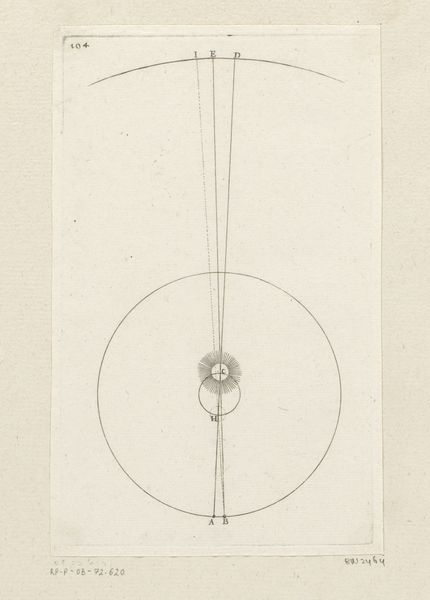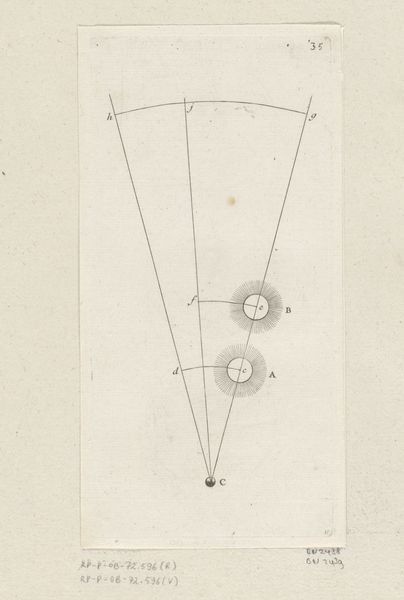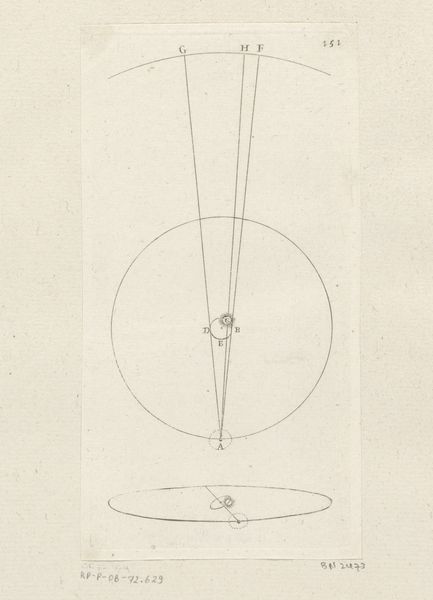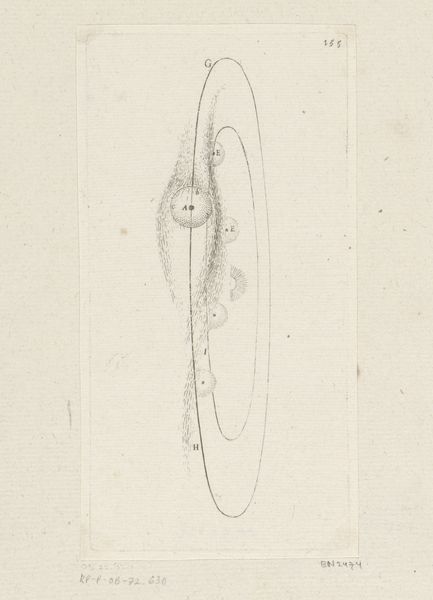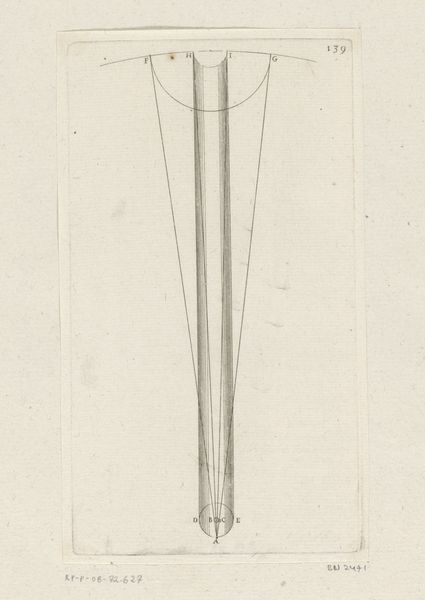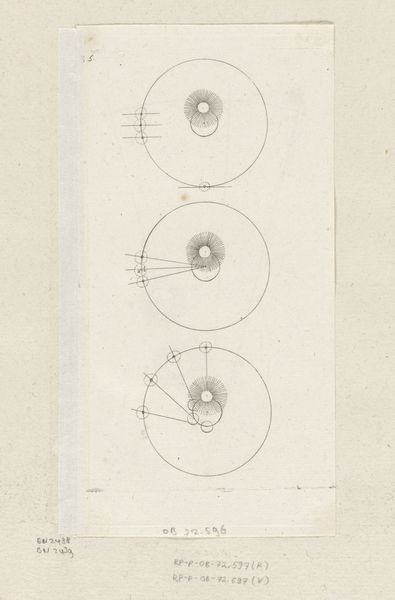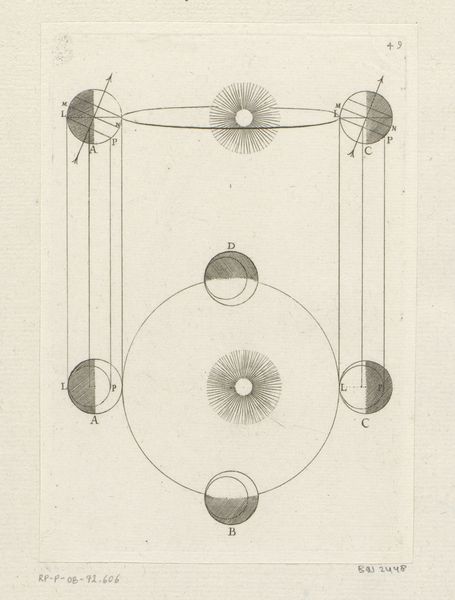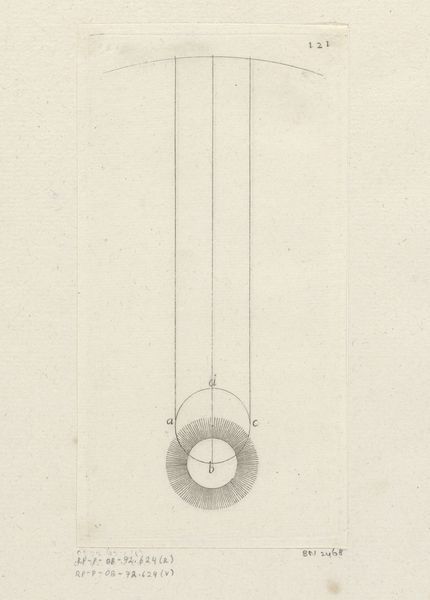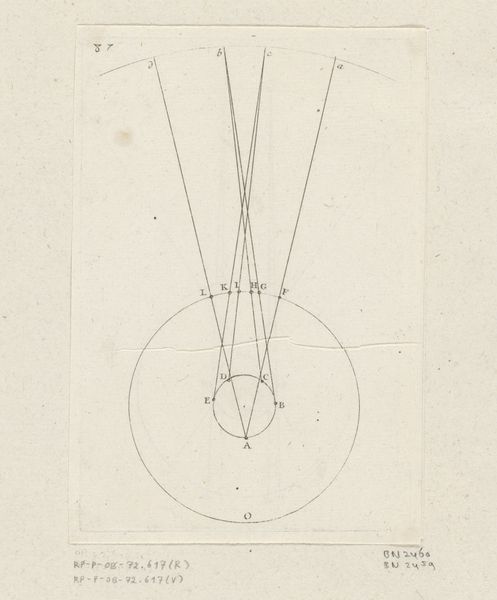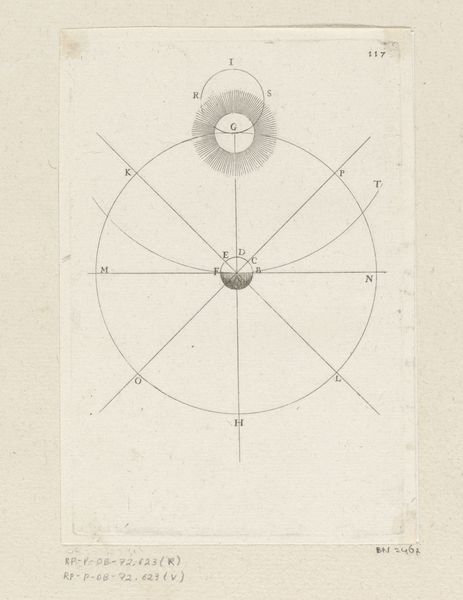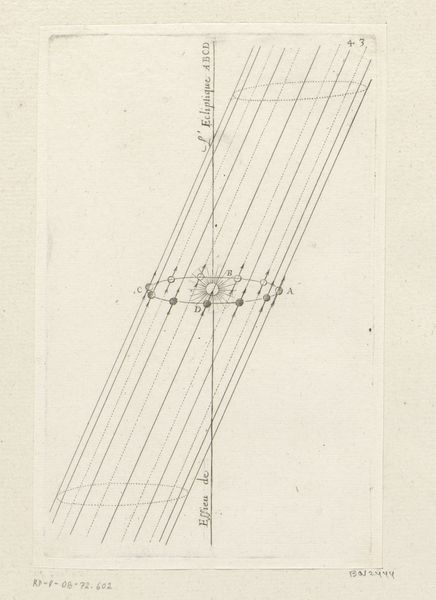
Beweging van de Aarde rond de Zon in elke maand van het jaar 1706
0:00
0:00
sebastienleclerci
Rijksmuseum
print, engraving
#
aged paper
#
narrative-art
#
baroque
# print
#
old engraving style
#
geometric
#
line
#
academic-art
#
engraving
Dimensions: height 177 mm, width 45 mm
Copyright: Rijks Museum: Open Domain
Editor: This is "Beweging van de Aarde rond de Zon in elke maand van het jaar," a 1706 engraving by Sébastien Leclerc I, held here at the Rijksmuseum. It's… surprisingly minimalist for Baroque, with these geometric shapes arranged vertically. What exactly are we seeing in terms of formal relationships? Curator: We observe a study in linear precision. Consider the unwavering quality of the engraved lines. The interplay of geometric forms — the stark circles against the aged paper. Note the precise gradation in the lines emanating from the largest circle, a calculated density suggestive of radiating light. The spatial arrangement presents a clear hierarchy. How does the strategic placement of these forms, and their proportional relationships, affect your understanding? Editor: I see what you mean about hierarchy. The top is clearly subordinate to the bottom—that "sun" shape. But, is the relationship between the two middle circles significant? Curator: Undoubtedly. Their placement in relation to each other, and the overall composition, introduces the crucial concept of spatial tension. Look closely: does the evenness of the line weights enhance the sense of mechanical, unemotional depiction, focusing us away from artistic flourish? Editor: It does feel very diagrammatic, almost like technical illustration. So, the visual elements aren't just representational; they're communicating specific structural relationships? Curator: Precisely. Leclerc utilizes form to articulate a complex idea. The engraving transforms scientific observation into visual language, demanding a critical engagement with its inherent structure. Editor: I never considered scientific diagrams through the lens of formalism! This makes me appreciate the clean lines in a new way. Curator: And, understanding that precision allows us to delve further into the aesthetic choices made by the artist, rather than only considering it as a product of its historical period.
Comments
No comments
Be the first to comment and join the conversation on the ultimate creative platform.
